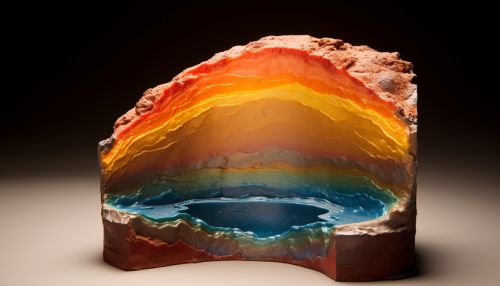Interactions Between Earths Core and Mantle
Introduction
The core and mantle of the Earth are two of the three main layers that make up our planet. These layers interact in complex ways that have significant impacts on the Earth's magnetic field, plate tectonics, and overall geological activity.


Structure of the Earth
The Earth is composed of three primary layers: the crust, the mantle, and the core. The crust is the outermost layer, followed by the mantle, and finally the core, which is further divided into the outer core and the inner core.
The Core
The Earth's core is divided into two parts: the outer core, which borders the mantle, and the inner core. The boundary separating these regions is called the Bullen discontinuity. The core is primarily composed of iron and nickel and has temperatures exceeding 5000 degrees Celsius.
The Mantle
The mantle is located between the Earth's crust and the outer core. It is rich in silicate minerals and is divided into two sections: the upper mantle and the lower mantle. The boundary between the mantle and the core is known as the Gutenberg discontinuity.
Interactions between the Core and the Mantle
The core and the mantle interact in several ways, influencing various geological and geophysical processes.
Heat Transfer
One of the primary interactions between the core and the mantle is heat transfer. This occurs through conduction and convection, with heat from the core causing convection currents within the mantle.
Magnetic Field Generation
The Earth's magnetic field is generated in the outer core through a process known as the geodynamo. This process involves the convection of molten iron within the outer core, driven by heat from the inner core and the mantle.
Influence on Plate Tectonics
The movement of tectonic plates is influenced by the interaction between the core and the mantle. The heat from the core causes convection currents in the mantle, which in turn drive the movement of the tectonic plates.
Implications of Core-Mantle Interactions
The interactions between the core and the mantle have significant implications for the Earth's magnetic field, geological activity, and even climate.
Magnetic Field
The Earth's magnetic field is crucial for protecting the planet from harmful solar radiation. The geodynamo process, driven by core-mantle interactions, is responsible for maintaining this magnetic field.
Geological Activity
Core-mantle interactions also influence geological activity, including earthquakes, volcanic activity, and mountain formation. These interactions drive the movement of tectonic plates, leading to these various forms of geological activity.
Climate
The heat transfer from the core to the mantle also has implications for the Earth's climate. This heat contributes to the movement of ocean currents and atmospheric winds, which play a significant role in global climate patterns.
